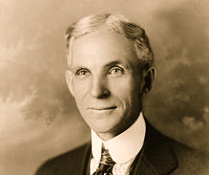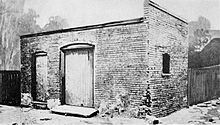Ford Motor Company

Ford Model T – 100 Years Later

In n 1903, Henry Ford funded, with 11 other partners the Ford Motor Company, and began a long journey that would made Ford a major player in modern cars history. Ford began its work immediately, thanks to the experience of his founder in the field of the first motor vehicles. The first car initialed with the letters of the alphabet were made and sold. There were cars with different number of cylinders, with various programs and probably the most successful car was the Model N, a small and light four-cylinder vehicle, offered for sale on the market at a price of $500. The real breakthrough came in 1908 when production Ford launched the T, called the universal car, destined for a popular diffusion, not only in the US but also in other countries around the world. In a short time T, affectionately called “”Tin Lizzie”” spread on American roads, thanks to the relatively small cost, which was about $ 400. The Model T became the symbol of mobility and and its production reached the 10,660 units in the first year, beating all records in the automotive industry at the time. The first Ford models were also distributed in Europe becoming very popular.
At the end of 1913, Ford produced half of all cars produced in the United States and to cope with the demand, Ford green lit mass production in his factory, trying to save on downtime. Ford thought that if every worker had been assigned to a place with a specific task, rather than move from one section to another, the car would have built more quickly. To test this theory, in the summer of 1913 a frame was dragged with a rope along the floor of the factory in Michigan. Thus the modern assembly line was born and the end, the Model T came off the assembly line at a rate much higher than before. With the new production soon reached a record of $ 10 million Ford T produced, and Ford was forced to build larger facilities, capable of responding to the increasing number of orders. Ford increased wages significantly, convinced that the worker who had built it, must have the economic means to buy their T. In 1919, Edsel Ford, son of Henry became the president of the company and that 3 years later was absorbed by the Lincoln Group, specialized in production of luxury cars.
Photograph of Henry Ford (ca. 1919)
Ford Motor Company is an American automaker and the world’s third largest automaker based on worldwide vehicle sales. Based in Dearborn, Michigan, a suburb of Detroit, the automaker was founded by Henry Ford, and incorporated on June 16, 1903. Ford Motor Company would go on to become one of the largest and most profitable companies in the world, as well as being one of the few to survive the Great Depression. The largest family-controlled company in the world, the Ford Motor Company has been in continuous family control for over 100 years. Ford now encompasses several brands, including Lincoln and Mercury.
The founding of Ford Motor Company
Henry Ford’s initial foray into automobile manufacturing was the Detroit Automobile Company, founded in 1899. The company floundered, and in 1901 was reorganized as the Henry Ford Company. Ford had a falling out with his financial backers, and in March 1902 left the company with the rights to his name and 900 dollars. The Henry Ford Company changed their name to Cadillac, brought in Henry M. Leland to manage the operation, and went on to be a successful manufacturer of automobiles.
Henry Ford himself turned to an acquaintance, coal dealer Alexander Y. Malcomson, to help finance another automobile company. Malcomson put up the money to start the partnership “Ford and Malcomson” and the pair designed a car and began ordering parts. However, by February 1903, Ford and Malcomson had gone through more money than expected, and the manufacturing firm of John and Horace Dodge, who had made parts for Ford and Malcomson, was demanding payment.
Malcomson, constrained by his coal business demands, turned to his uncle John S. Gray, the president of the German-American Savings Bank and a good friend. Malcomson proposed incorporating Ford and Malcomson to bring in new investors, and wanted Gray to join the company, thinking that Gray’s name would attract others to invest. Gray was at first uninterested, but Malcomson promised he could withdraw his share at any time, so Gray reluctantly agreed. On the strength of Gray’s name, Malcomson recruited other business acquaintances to invest, including local merchants Albert Strelow and Vernon Fry, lawyers John Anderson and Horace Rackham, Charles T. Bennett of the Daisy Air Rifle Company, and his own clerk James Couzens. Malcomson also convinced the Dodges to accept stock in lieu of payment.
On June 16, 1903, the Ford Motor Company was incorporated, with 12 investors owning a total of 1000 shares. Ford and Malcomson together retained 51% of the new company in exchange for their earlier investments. When the total stock ownership was tabulated, shares in the company were: Henry Ford (255 shares), Alexander Y. Malcomson (255 shares), John S. Gray (105 shares), John W. Anderson (50 shares), Horace Rackham (50 shares), Horace E. Dodge (50 shares), John F. Dodge (50 shares), Charles T. Bennett (50 shares), Vernon C. Fry (50 shares), Albert Strelow (50 shares), James Couzens (25 shares), and Charles J. Woodall (10 shares).
At the first stockholder meeting on June 18, Gray was elected president, Ford vice-president, and James Couzens secretary. Despite Gray’s misgivings, Ford Motor Company was immediately profitable, with profits by October 1, 1903 of almost $37,000. A dividend of 10% was paid that October, an additional dividend of 20% at the beginning of 1904, and another 68% in June 1904. Two dividends of 100% each in June and July 1905 brought the total investor profits to nearly 300% in just over 2 years; 1905 total profits were almost $300,000.
However, there were internal frictions in the company that Gray was nominally in charge of. Most of the investors, both Malcomson and Gray included, had their own businesses to attend to; only Ford and Couzens worked full-time at the company. The issue came to a head when the principal stockholders, Ford and Malcomson, quarreled over the future direction of the company. Gray sided with Ford. By early 1906 Malcomson was effectively frozen out of the Ford Motor Company, and in May sold his shares to Henry Ford.[1]John S. Gray died unexpectedly in 1906, and his position as Ford’s president was taken over by Ford himself soon afterward.
Early developments and assembly line
The first Ford factory on Bagley Street, Detroit.
During its early years, the company produced a range of vehicles designated, chronologically, from the Ford Model A (1903) to the Model K and Model S (Ford’s last right-hand steering model) of 1907. The K, Ford’s first six-cylinder model, was known as “the gentleman’s roadster” and “the silent cyclone”, and sold for US$2800; by contrast, around that time, the Enger 40 was priced at US$2000, the Colt Runabout US$1500, the high-volume Oldsmobile Runabout US$650, Western‘s Gale Model A US$500, and the Success hit the amazingly low US$250.
The next year, Henry Ford introduced the Model T. Earlier models were produced at a rate of only a few a day at a rented factory on Mack Avenue in Detroit, Michigan, with groups of two or three men working on each car from components made to order by other companies (what would come to be called an “assembled car”). The first Model Ts were built at the Piquette Road Manufacturing Plant, the first company-owned factory. In its first full year of production, 1909, about 18,000 Model Ts were built. As demand for the car grew, the company moved production to the much larger Highland Park Plant, and in 1911, the first year of operation there, 69,762 Model Ts were produced, with 170,211 in 1912. By 1913, the company had developed all of the basic techniques of the assembly line and mass production. Ford introduced the world’s first moving assembly line that year, which reduced chassis assembly time from 12 1⁄2 hours in October to 2 hours 40 minutes (and ultimately 1 hour 33 minutes), and boosted annual output to 202,667 units that year. After a Ford ad promised profit-sharing if sales hit 300,000 between August 1914 and August 1915, sales in 1914 reached 308,162, and 501,462 in 1915; by 1920, production would exceed one million a year.
These innovations were hard on employees, and turnover of workers was very high, while increased productivity actually reduced labor demand. Turnover meant delays and extra costs of training, and use of slow workers. In January 1914, Ford solved the employee turnover problem by doubling pay to $5 a day, cutting shifts from nine hours to an eight hour day for a 5 day work week (which also increased sales; a line worker could buy a T with less than four months’ pay), and instituting hiring practices that identified the best workers, including disabled people considered unemployable by other firms. Employee turnover plunged, productivity soared, and with it, the cost per vehicle plummeted. Ford cut prices again and again and invented the system of franchised dealers who were loyal to his brand name. Wall Street had criticized Ford’s generous labor practices when he began paying workers enough to buy the products they made.



